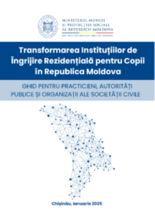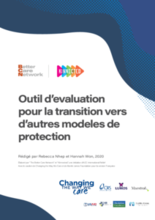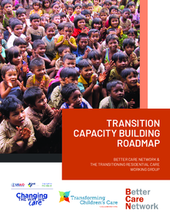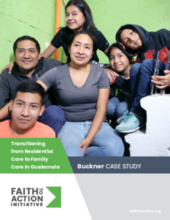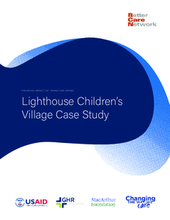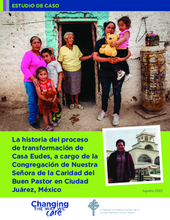Turning collected information into action
By this stage a lot of information has been collected and a lot of important insights have been gained that will influence the approach to transition. This stage is about making sense of all the information and integrate it into an overarching strategy that will guide the implementation of the transition.
The aim of this stage is therefore to synthesis the information and develop an overarching strategic plan, a budget/financial plan, and a monitoring and evaluation plan to track effectiveness throughout the implementation stage.
This stage is largely concerned with synthesizing information and formulating plans. Activities that may occur during this stage include:
- Using the Transitioning Models of Care Assessment Tool to synthesis information collected from assessments, stakeholder engagements and systems surveying to:
- Identify risks that need to be managed
- Identify key opportunities
- Formulate a list of strategic actions
- Determine the right end goal - full transition or safe closure/divestment
- Rate the overall risk and readiness for transition
- Determine the appropriate starting point for implementation
- Cost modelling/ cost projection analysis to estimate the potential costs of transition throughout the implementation phase
- Identifying ways to fund spike costs associated with transition
- Planning meetings/ participatory planning sessions, including with young people in care, to develop the strategic plan and any associated action plans.
- Determining the appropriate time to begin to explore post transition programming
- Forming a committee to help guide the transition process
Elements that may need to be included in a strategic plan are:
- Stakeholder engagement, consultation and communication
- Risk mitigation strategies and responses
- Pre-determining triggers warranting exploration of divestment (for donors)
- Organizational and governance strengthening activities and goals
- Human resources, staff training and capacity development
- Technical support and partnerships
- Developing the social work case management practice framework
- Service mapping
- Community level sensitization and awareness raising
- Supervision framework and monitoring
- Budget and fundraising strategy
- Monitoring and evaluation framework
Key milestones associated with this stage are, the organization and/or technical support provider have:
- Developed a comprehensive strategic plan to guide the transition. This may include post transition programming if the organisation was well positioned to conduct necessary assessments and analysis prior to commencing the implementation phase of transition (see phase three)
- Developed a budget for the transition
- Formulated a training and development plan for practitioners/staff
Resources
Displaying 1 - 10 of 15
The Moldova Transformation Guidance aims to support the transformation process of residential care facilities (RCF) to models that promote family support and community-based services, or to safely close them and redirect their resources. National and local authorities can use this guidance to design, plan, budget, communicate, and coordinate transformation at both individual and system levels.
This package of materials encompasses a comprehensive costing framework for scaling two key care reform models implemented by the Changing the Way We Care initiative in Kenya—Kafaalah and Case Management for Reintegration.
Cet outil vise à aider les praticiens à atteindre les objectifs suivants lorsqu'ils fournissent un soutien technique aux institutions en transition :
This document outlines a capacity-building roadmap for scaling up the transition of residential care services. It is an interagency resource developed by Better Care Network and the Transitioning Residential Care Working Group (Transforming Children's Care Collaborative).
The story of Heartline’s transition from residential care to family care is told in this recently released Faith to Action case study. The case study details their experience through three stages of transition—learning, preparation and planning, and full transition—with transparency. It addresses common challenges for transitioning organizations, as well as the strategies Heartline took to overcome them.
The story of Buckner Guatemala’s transition from residential care to family care is told in this recently released Faith to Action case study. The case study details their experience through three stages of transition—learning, preparation and planning, and full transition—with transparency. It addresses common challenges for transitioning organizations, as well as the strategies Buckner took to overcome them.
The Transitioning Residential Care Cost Estimation Tool was designed to help you consider the cost implications of #transition and generate an estimate to help with planning & securing a commitment to transition from key stakeholders.
In any transition process, different levels of risk and challenges can impact the children in care and therefore need to be managed.
Este estudio de caso destaca la transición de servicios de cuidado residencial a los basados en la familia y comunidad las realizado por las Hermanas de Nuestra Señora de la Caridad del Buen Pastor, en Ciudad Juárez, México.

